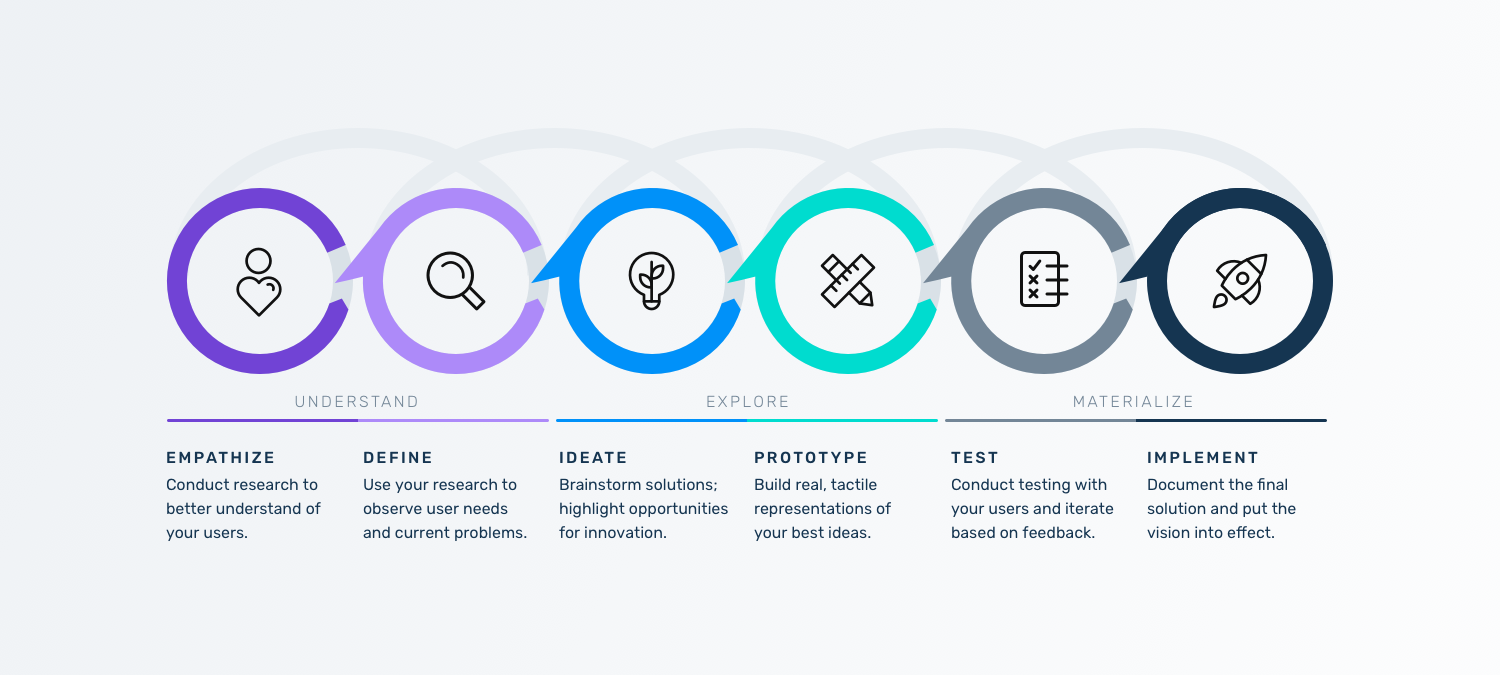Design Thinking Process
The Design Thinking Process is a human-centered approach with a primary focus on empathy to uncover deep needs and insights of users to build an accurate mindset when considering possible solutions. The approach takes an individual or team through a phase of understanding, exploring and then materializing one or two of the solutions for testing. The steps are not linear and can occur simultaneously and be repeated.






